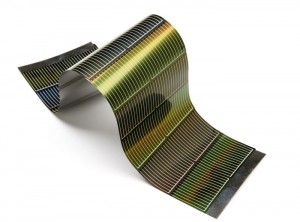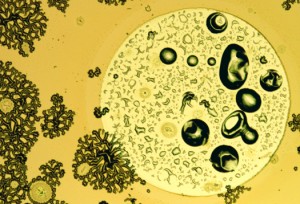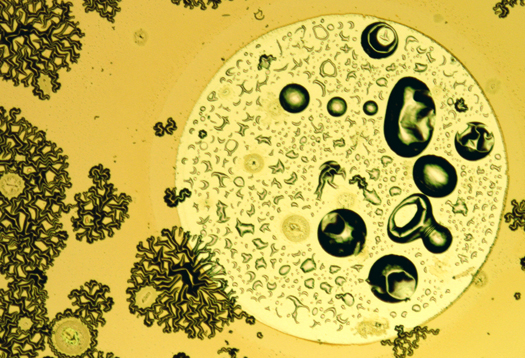Chlorophyll molecules are clustered together in chloroplasts, complexes designed to absorb light and convert it to energy in the form of free floating electrons. Chlorophyll is extremely efficient in converting light energy. Our current photovoltaic solar cells on the other hand are no match for chlorophyll.
Today’s solar photovoltaics are made from crystalline silicon and cadmium-telluride. These cells continue to be expensive to produce, use both scarce and toxic materials, and are at best 20% efficient in converting light into energy. The cells are inflexible and limited in deployment to rooftop surfaces or in ground-based arrays.
The ultimate goal of the industry is to develop solar technology that works like plant cells. This means finding an equivalent to chlorophyll. A first step was made in 1991 with the development of Gratzel Cells. These cells use an organic dye and nanoparticles composed of titanium dioxide to mimic chlorophyll. The dye acts as a solar absorber converting sunlight into free electrons. The inventor is Michael Gratzel, Director of the Laboratory of Photonics and Interfaces at the Ecole Polytechnique Federale de Lausanne.
Gratzel Cells have unique advantages that include:
- the ability to generate electricity in almost any light condition
- low production costs
- flexibility allowing them to be applied to curved surfaces
But Gratzel Cells have suffered from a number of challenges including:
- they typically have a shorter than average life when compared to other solar technologies (about 18 months)
- the organic dyes corrode the cells resulting in leaks
The first commercial product using Gratzel Cells came out in 2009, a solar array backpack for charging portable electronics.

Researchers at Northwestern Universityhave been experimenting with a replacement to the organic liquid dye using a solid electrolyte. The result is the Kanatzidis-Chang Cell, named after two of the research scientists who developed it, made from cesium, tin and iodine. Each cell measures 0.5 centimeters (less than 1/4″) square and about 10 microns thick. A cell contains billions of nanoparticles, each 20 nanometers in diameter, creating huge surface areas for interaction with sunlight. Current performance is half the efficiency of top-of-the-line silicon-based photovoltaics but improvements of 1% per month have been demonstrated in the University’s lab.
The new cells have many advantages over Gratzel Cells.
- They can be applied like a paint that dries to form a solid mass.
- They can be a coating on any shaped surface.
- They are made from materials that are readily available and inexpensive.
- And they do not corrode or leak.










